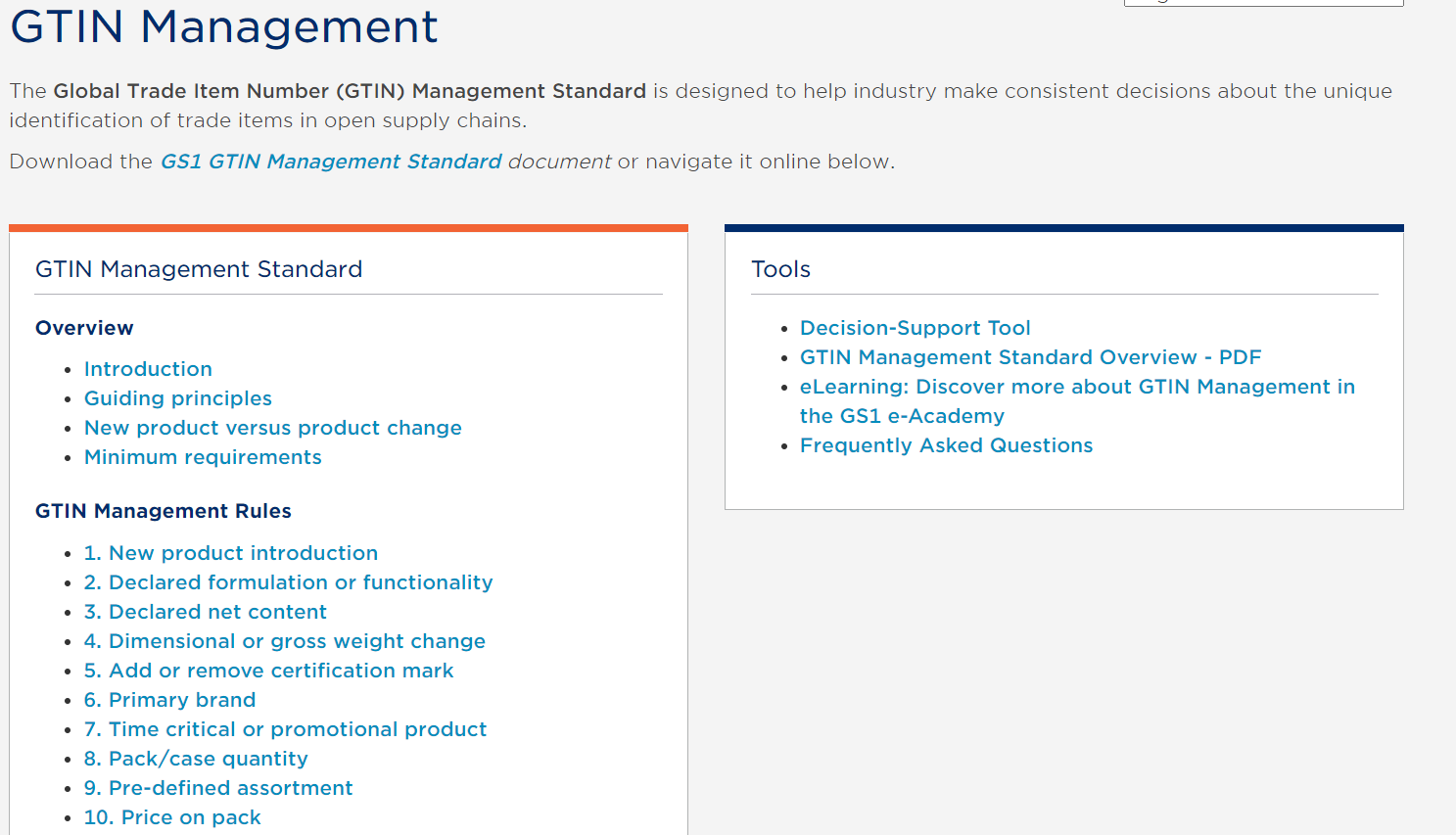
The Global Trade Item Number (GTIN) is a crucial product identifier, serving as a universal reference point for brand owners, retailers, and consumers. Like a fingerprint, a GTIN is unique to each product, ensuring accurate identification across the global supply chain. This uniqueness helps prevent errors, such as shipping the wrong item, and enhances traceability, allowing products to be tracked from manufacturing to retail.
For brand owners, keeping the GTIN information current is essential for business growth and maintaining strong relationships with partners. As products evolve, new retail strategies are tested, regulations change, and branding updates occur, one common question arises: “Do we need to update our GTIN?“
To answer this, consider these three guiding principles for managing GTIN updates:
GTIN Changes: Three Key Principles
When introducing changes to a product, keep these principles in mind to determine whether a new GTIN is necessary.
Consumer Perception
If a product change is significant enough that consumers or trading partners would need to distinguish the new version from the old, it’s time for a new GTIN.
Example: A beverage company introduces a limited-edition flavor with unique packaging for the summer season. Since this flavor and packaging are distinct and only available for a limited time, a new GTIN is required to differentiate it from the regular flavors.
Regulatory Compliance
Changes that require new regulatory disclosures or liability warnings to consumers or trading partners also necessitate a new GTIN. This ensures compliance and transparency.
Example: A cosmetics brand reformulates its popular face cream to include a new active ingredient that requires updated labeling according to regulatory guidelines. Since the new formula could affect consumers differently, a new GTIN is necessary to distinguish this product from the previous version.
Supply Chain Impact
Any alteration that significantly impacts the supply chain, such as changes in packaging, shipping, or storage requirements, should prompt a GTIN revision to maintain logistical efficiency.
Example: A food manufacturer decides to shift from selling their granola in bulk to individually packaged portions for convenience stores. The change in packaging and the way the product is handled in the supply chain—moving from bulk to individually wrapped items—means a new GTIN is required.
GS1 General Specifications & GTIN Management Standards

The global documents that define GTIN assignments are the GS1 General Specification and GTIN Management Guide. Due to the varying industry applications, these guidelines are detailed and technical. GS1 provides certification programs so companies can have internal dedicated experts to address situations. Conversely, companies can alternatively subscribe to GS1 Barcode Support program to have a dedicated barcode consultant assist with GTIN assignment and barcoding questions. To make informed decisions about whether a new GTIN is needed, brand owners can rely on their consultants to address product changes. The only constant in business is change and our consultants are there to help.
Recent Real World Examples
For instance, a tech company bundled its popular smartwatch with a new fitness app subscription and special packaging for the holiday season, and needed to determine if it needed a new GTIN? Yes, it did. This bundle creates a new product offering, which requires a new GTIN for clear identification and differentiation in the supply chain.
Another example, a pharmaceutical company aquired a smaller brand and decided to integrate its products under the larger brand’s name and packaging. In this case, the products did require new UPC/GTIN assignments. The rebranded products must be distinguishable from their previous versions, necessitating new GTINs.
Accurately Represent Your Products
Proper GTIN management is essential for maintaining product integrity, ensuring regulatory compliance, and optimizing supply chain efficiency. By following these guiding principles, brand owners can determine when a new GTIN is required and avoid potential pitfalls in the global marketplace.

